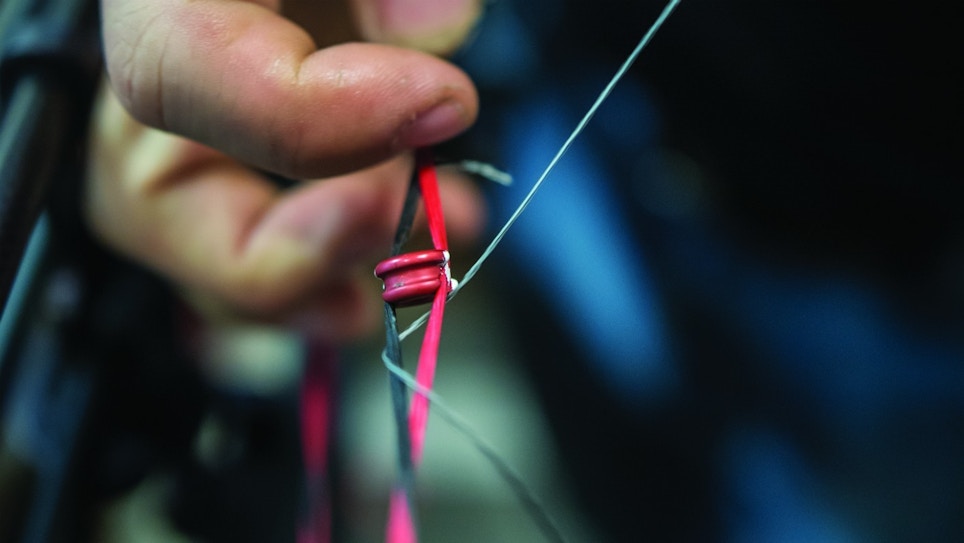Korbin Williams
Korbin’s Archery
Seminole, Texas
Optics. We have brought in optics, which offer phenomenal margins. We’re talking up to 60% while still competing with online pricing. We’ve done very well with Leupold and Swarovski.
In some markets where competition is fierce, shops might get only 20% or less on bows. We’re in a unique market with very little competition — the closest is one hour away. That said, I get higher margins on bows than many shops. I don’t reduce my pricing at all.
We buy the cheapest peep sights we can find at ATA. This year, we bought bulk peep sights through Pine Ridge Archery that cost us less than $2 each, and we sell them for $14 each. We buy at least 500 or more and go through them annually. That’s a minimum of $6,000 in profits from peep sights alone. We also buy D-loop material from BCY in bulk. We sell it for $2 per inch, so a D-loop is $4.
Our best margins come from labor. We charge $85 per hour with a one-hour minimum. Approximately 25% of our income in 2019 resulted from labor. When someone buys a bow online and gets it set up and tuned here, we make a large sum on labor. In some cases, we make more on bows purchased elsewhere than on bows we sell.
Many shops don’t pay close enough attention to profit margins. Giving discounts hurts margins so much because you need to sell higher quantities than if you sell products at MSRP. That’s how I look at it. I’d rather sell one bow at full price than sell two at majorly discounted prices.
Robb Herring
B&B Archery
Pearl, Mississippi
Bows don’t make big profits. Accessories do. We make more points on small items like kisser buttons and string dampeners. Rests, sights and stabilizers yield substantial margins, too. If we relied solely on profit margins from bow sales, we wouldn’t be in business.
We also save on the small items by ordering in bulk quantities. For example, we order D-loop material in 100-foot rolls. Likewise, we purchase peep sights by the hundreds, not singly. Bulk is a better option for shops to make profits. Yes, it takes a little bit longer to sell through 500 peeps, but when it cuts costs, it’s worth it. These staple items easily carry over to the next year and are sold at fixed prices — no discounting needed to move them.
By reducing costs, you can increase margins. We have less than $1 into each D-loop, and we sell them for $15, installed. We have just a few bucks into each peep sight, and we turn them around at $15, installed. Those profit margins are huge, and they make up for profit shrinkage resulting from closeout sales or even shoplifting.
Casey Smith
Straight 6 Archery
Missoula, Montana
Profit margin is everything, especially for small pro shops. You really have to watch where your dollars are going and put your money to work where it counts. When I started the shop in 2014, I had no clue how important profit margins are. I’d see a cool product and decide to carry it. Eventually, in 2015, I started to understand the formula and learned I’d been doing it all wrong my entire first year.
Now, our store is completely margin-based. I use a 40/120 rule. The 40 stands for my gross margin. That’s the minimum percentage I need to make in order to even consider bringing a product in. The 120 stands for the number of days the product is allowed to be on the shelf. If a product has a 90% markup but takes nine months to sell, my margin decreases because that item is taking up valuable shelf space.
People misconceive that when you sell a $1,000 bow, you make $1,000. That isn’t true. Truthfully, we make a lower profit margin on bows than anything else in our store. If bows weren’t our business’ bread and butter, I wouldn’t carry them.
Small accessories rack up the highest profit margins for us. Some ideas are Pine Ridge Archery’s peeps, peep tubing, Nitro Whiskers and field points. We order in large quantities to take advantage of bulk pricing. Nearly every customer needs a peep sight, so I buy them in quantities of 500 for each popular size. Our shop is also affiliated with the NABA buying group, which provides additional savings in some cases, too.
To break down profit margins on small accessories, let’s take Pine Ridge Archery’s peep sights, for example. They cost us $2 — that includes labor for installation. We retail them for $7.99 a piece. That’s a huge profit margin on an easy-to-sell item.
The best part of staple accessories like peeps and field points is that they always sell. If you bring in too many flagship bows and don’t sell through them before the new ones release, you have to sell at a discount and eat some or all of your profit. Peep sights and field points don’t become obsolete, so ordering enough to get bulk pricing is a low-risk proposition, and you always know you can sell them at the same price, no matter what.






